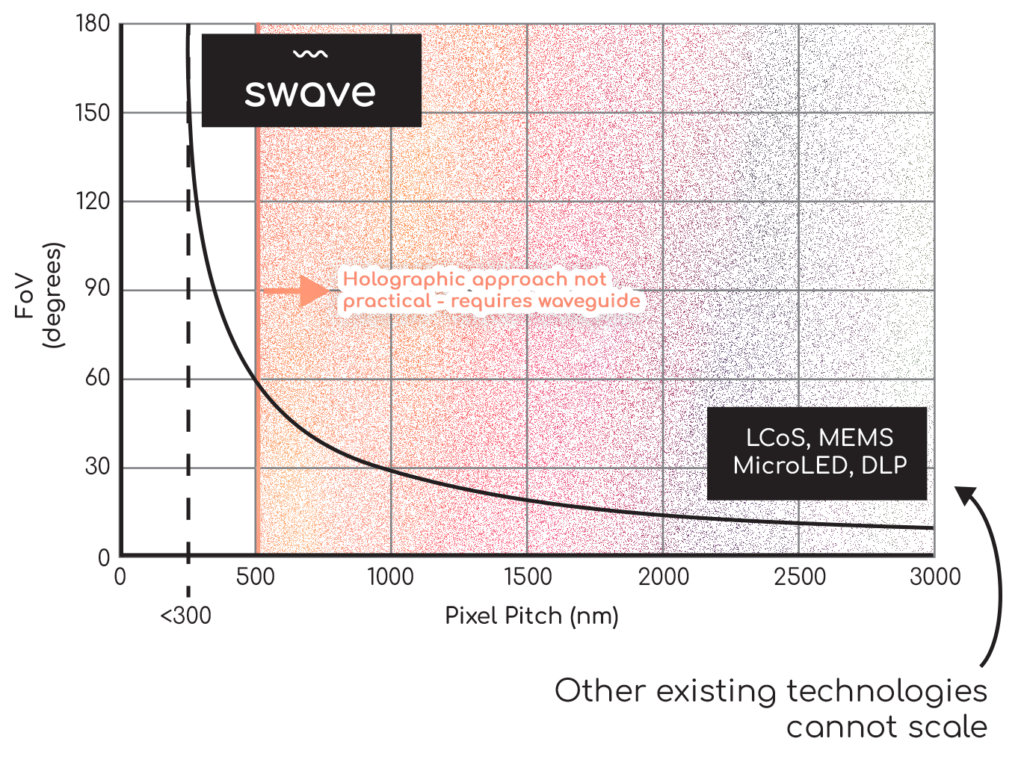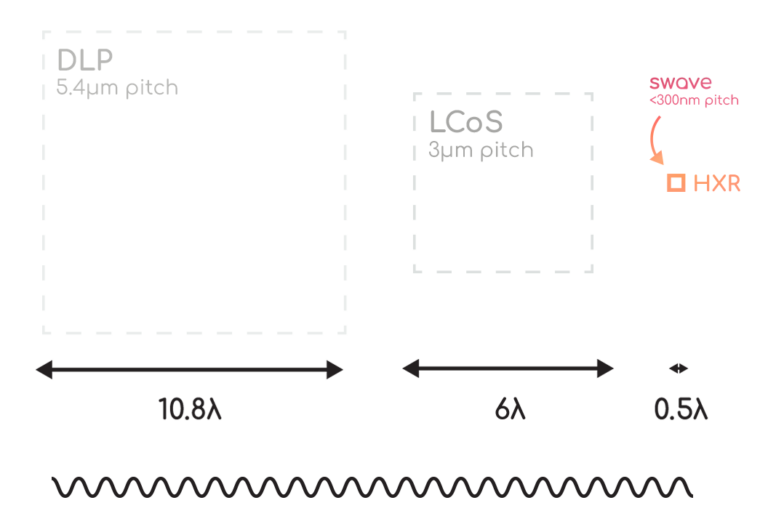NanoPixel Holography
Using pixels smaller than light to enable real holographic display in the smallest form factors.
AR Glasses Requirements
Effective, Attractive, Comfortable AR glasses require both Holography and a Nano-Pixel
HXR is the only technology able to meet all the design goals for next generation AR glasses
| Requirements | Goal | NanoPixel Required | Holography Required | Goal Met with HXR Technology |
|---|---|---|---|---|
| FOV | Largest Field of View | ✓ | ✓ | ✓ |
| Eyebox | Largest Eyebox | ✓ | ✓ | ✓ |
| Size | Smallest Form Factor | ✓ | ✓ | ✓ |
| Weight | Lightest | ✓ | ✓ | ✓ |
| No Waveguide | High Efficiency and Low Weight | ✓ | ✓ | |
| Prescription Lens Compatible | No need to order/make special prescription lenses | ✓ | ✓ | |
| Programmable Focal Distance | Focus as the eyes do in real life | ✓ | ✓ | |
| Brightness | Viewable in Bright Conditions | ✓ | ✓ | ✓ |
| Contrast | High Contrast | ✓ | ✓ | |
| Battery Life | All Day Use | ✓ | ||
| No VAC | Easy on the Eyes | ✓ | ✓ |
Large FOVs Require a NanoPixel & Holography

In Holography, the smaller the pixel, the greater the diffraction angle and the wider the resulting Field of View.
Holographic approach not practical for pixel sizes above 500nm: requires waveguide
HXR has the world’s smallest pixels



